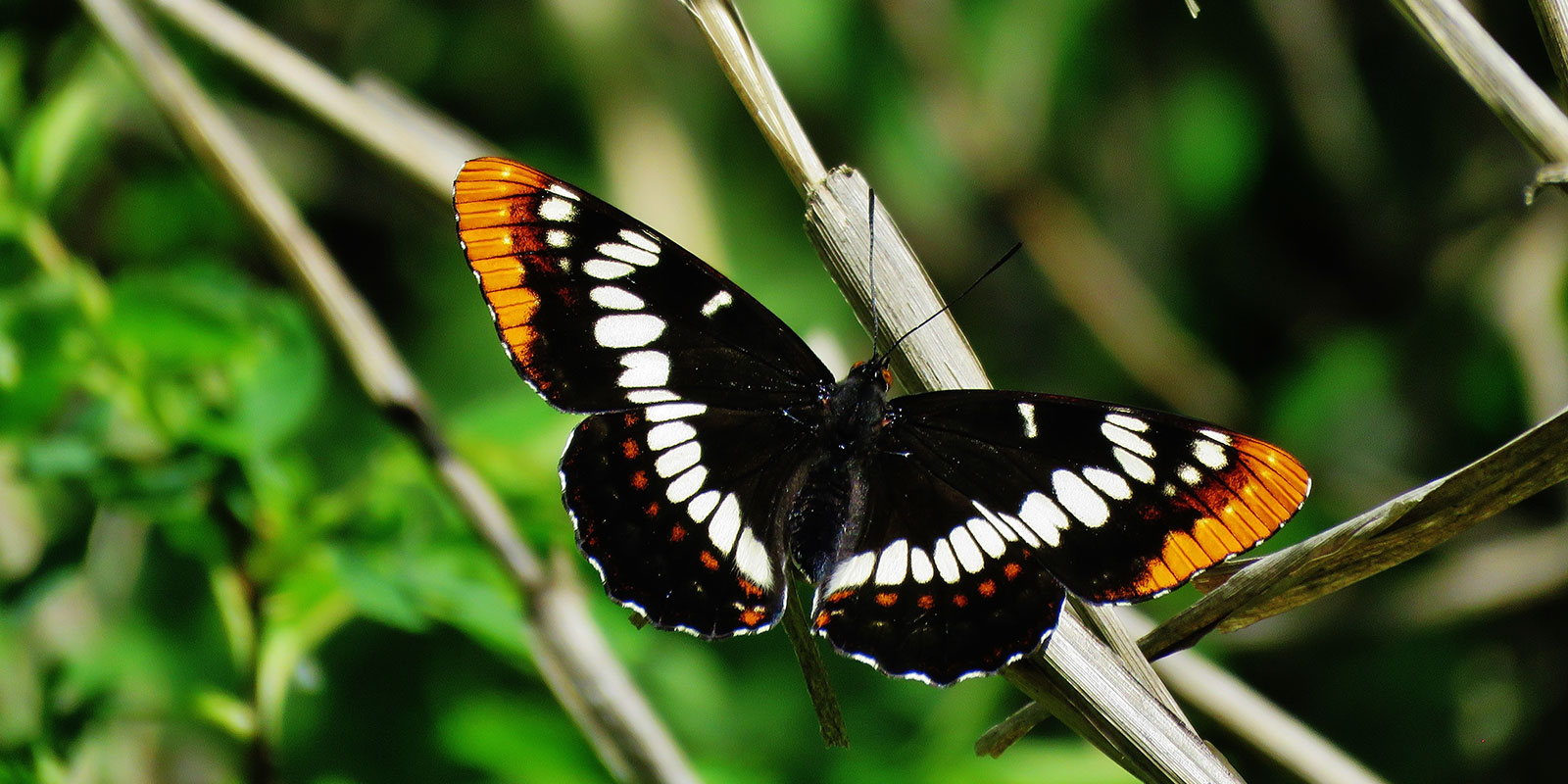Butterfly secrets: Wing design, navigation skills & other cool facts
By Stephen Nett
Dozens of colorful butterfly species appear in Sonoma County and its parks each spring, displaying their intricate patterns and designs. To go butterfly spotting with a new appreciation, check out what we’re learning about the butterfly's secrets.
Olympian Feats
Some butterflies, like the painted lady, can travel faster than you can run. Fluttering along at 20-plus miles per hour, over days and weeks they can cover more than 1,000 miles on a migratory path. That marathon persistence for such a small flyer is a marvel of the animal kingdom.
Designer Labels
Nearly every butterfly species (there are more than 18,000) has its own combination of colors, patterns, and wing shapes. What’s even more amazing, butterflies are born with the ability to recognize their own brand. The eye-catching fashion is fully practical as well: It helps them find mates, and some designs are highly effective as camouflage and for warning off predators.
Special Effects Artists
Butterfly wings are covered in delicate scales, like colorful mosaic tiles. But how do they create exotic visual effects like iridescent shading, bright flashes and metallic sheen? New studies have uncovered the secret: nano-engineering. Certain scales have extremely fine surface textures that bend and shift light into shimmering optical effects. 
Color Conscious
Butterfly vision is superb. Although their eyes work differently than ours, they can distinguish the same range of colors we can. That high color sensitivity lets them spot flowers and specific sources of food. For example, the local pipevine swallowtail butterfly caterpillar only eats the native California pipevine plant. Acute color vision is key to finding their way home in a wild landscape.

Crazy-Good Navigators
Could you find your way to Mexico or Canada without directions? Several butterfly species, like the painted lady and monarch, migrate in both directions across Sonoma County. The key is their ability to tell time and track the position of the sun. The time-keeping cells are in their antenna, and butterfly eyes can follow the sun's location with good accuracy. That tracking lets the butterfly’s brain know where to turn to find its genetically programmed destination.

Shape Shifters
The striking designs of butterfly wings are even more remarkable considering they only appear after a weeks-long series of body makeovers – from egg to caterpillar, through several molts, into a chrysalis, before transforming into the adult flyer. What’s most remarkable is that this changing series of entirely different forms is set by genetic code, in what must be one of nature’s most exquisite demonstrations of the power of DNA.

There are dozens of local butterfly species, like the dogface, admiral, checkerspot, orangetip, buckeye, skippers, hairstreaks and blues, but butterflies are celebrated across all cultures, in song, poetry, art and story.
And although they’ve been floating in Earth’s skies for nearly 60 million years, butterflies are entering a new phase. Pressured by habitat loss and environmental stressors, their numbers are falling rapidly in many places. Protecting them and the resources they need is an essential role of parks, to ensure they’ll be appreciated for generations to come.
So take a walk and watch for butterflies. How many designs can you spot?
For information about the parks and trails where these photographs were taken, visit our Find a Park page.
Stephen Nett is a Bodega Bay-based naturalist, writer and speaker.


 Translate
Translate